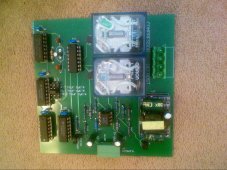Externet
New Member
Hi.
Perhaps the wrong forum section for the subject; but can be dangerous for many without proper procedures and servicing instructions.
Do service manuals exist or are they plainly unobtanium for the many brands / models on the market ?
At least; if no schematics are available to the public; do helpful block diagrams of inverters exist ? Nothing wrong with protecting copyright circuitry and patents; but do 'authorized' service centers have access to repair information, upgrades, proper parts ?
Do you know of any published repair /service / upgrade / troubleshooting / schematics somewhere; current or obsolete ?
Is it safe to assume H6 (as in Delta/Tesla inverters) is a topology and not just a lettersoup model from manufacturer ?
----> http://www.ijatir.org/uploads/143526IJATIR5952-210.pdf
-Please move if deserved-
Perhaps the wrong forum section for the subject; but can be dangerous for many without proper procedures and servicing instructions.
Do service manuals exist or are they plainly unobtanium for the many brands / models on the market ?
At least; if no schematics are available to the public; do helpful block diagrams of inverters exist ? Nothing wrong with protecting copyright circuitry and patents; but do 'authorized' service centers have access to repair information, upgrades, proper parts ?
Do you know of any published repair /service / upgrade / troubleshooting / schematics somewhere; current or obsolete ?
Is it safe to assume H6 (as in Delta/Tesla inverters) is a topology and not just a lettersoup model from manufacturer ?
----> http://www.ijatir.org/uploads/143526IJATIR5952-210.pdf
-Please move if deserved-



